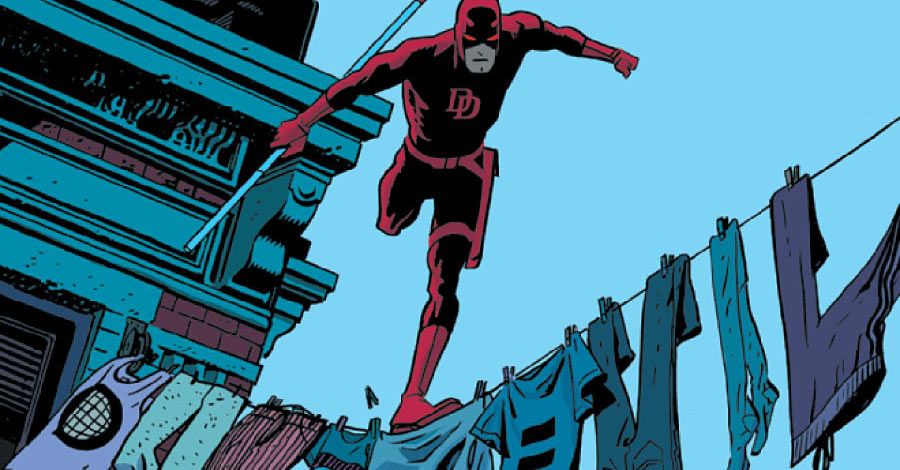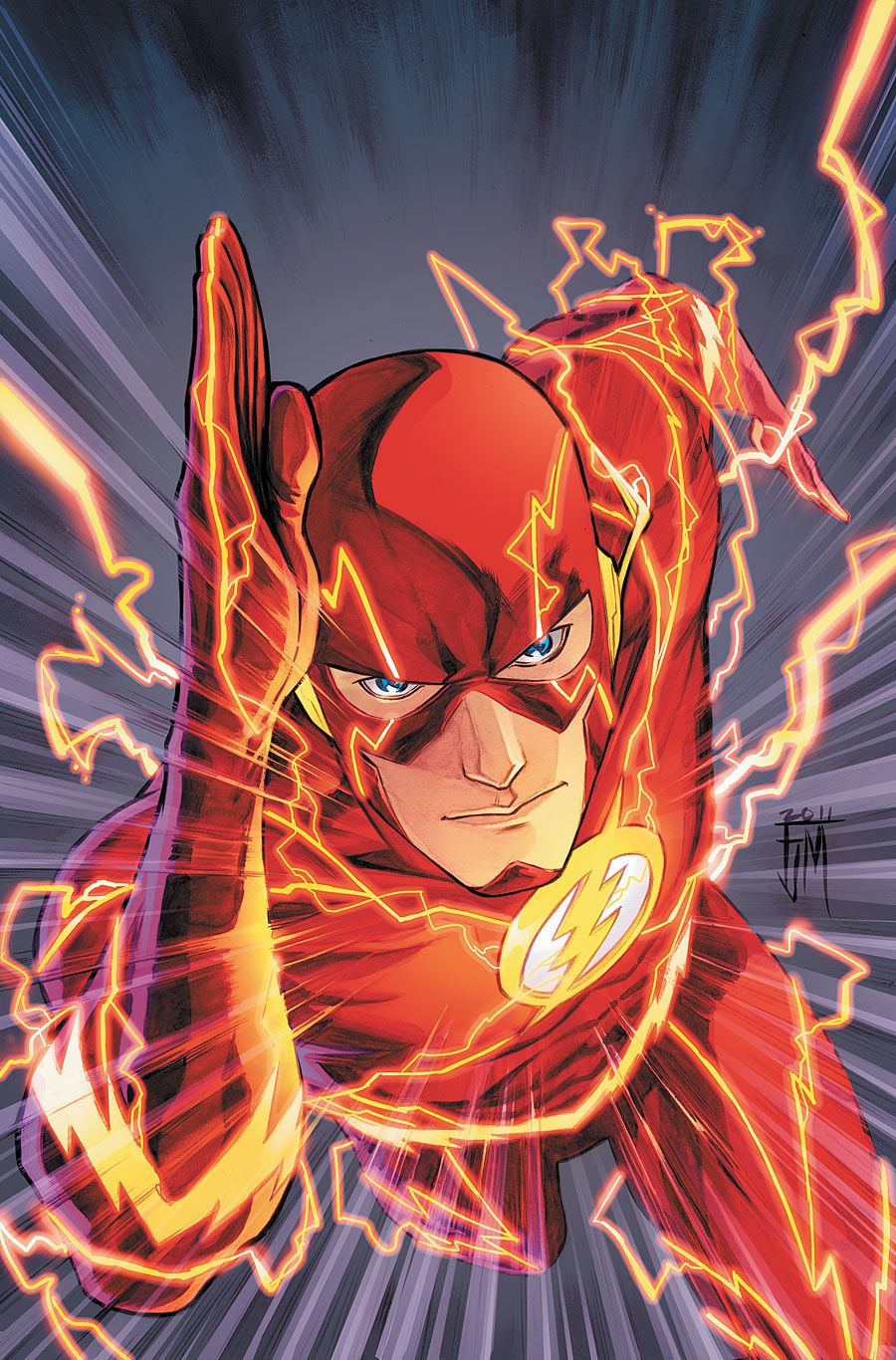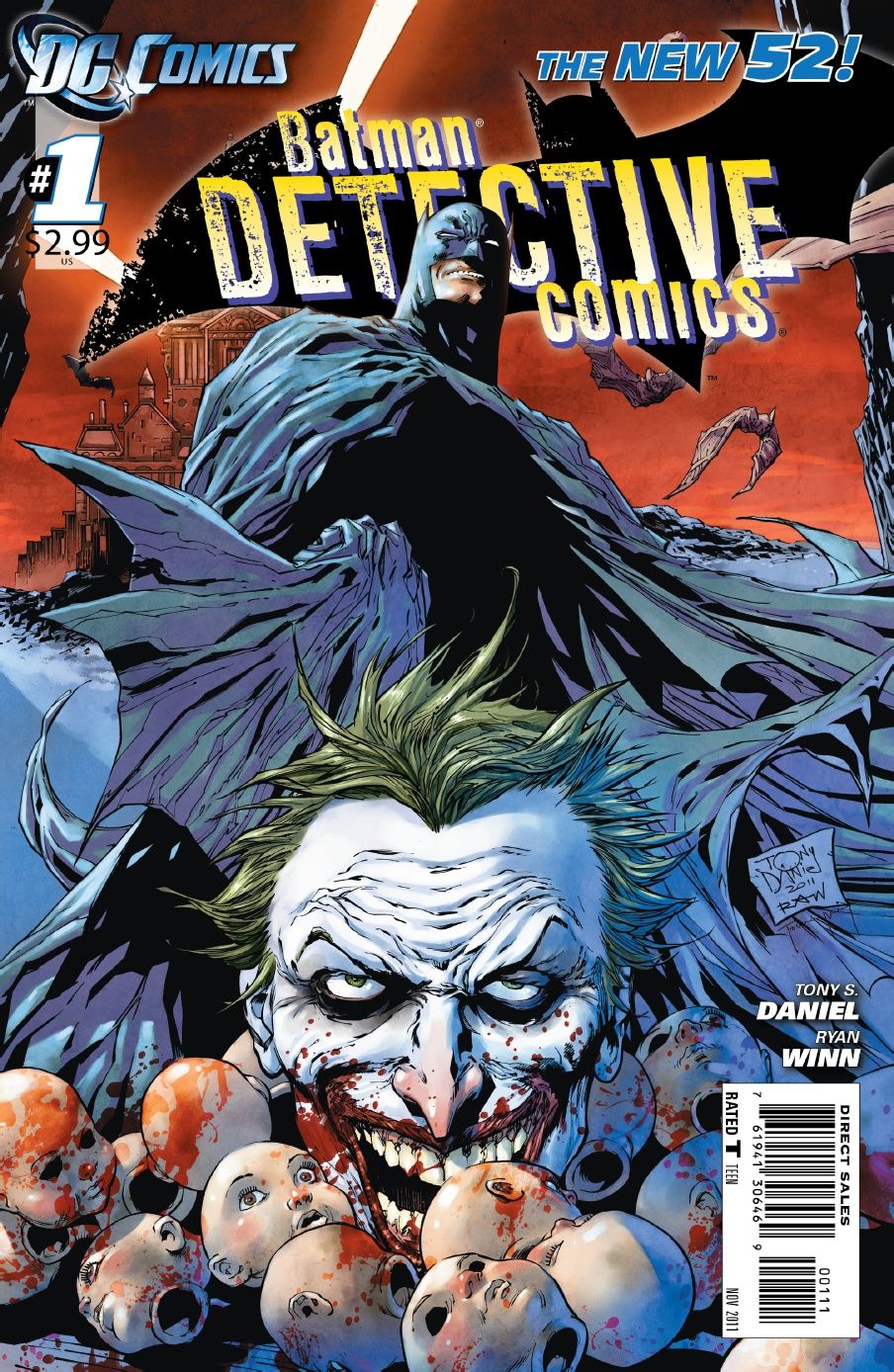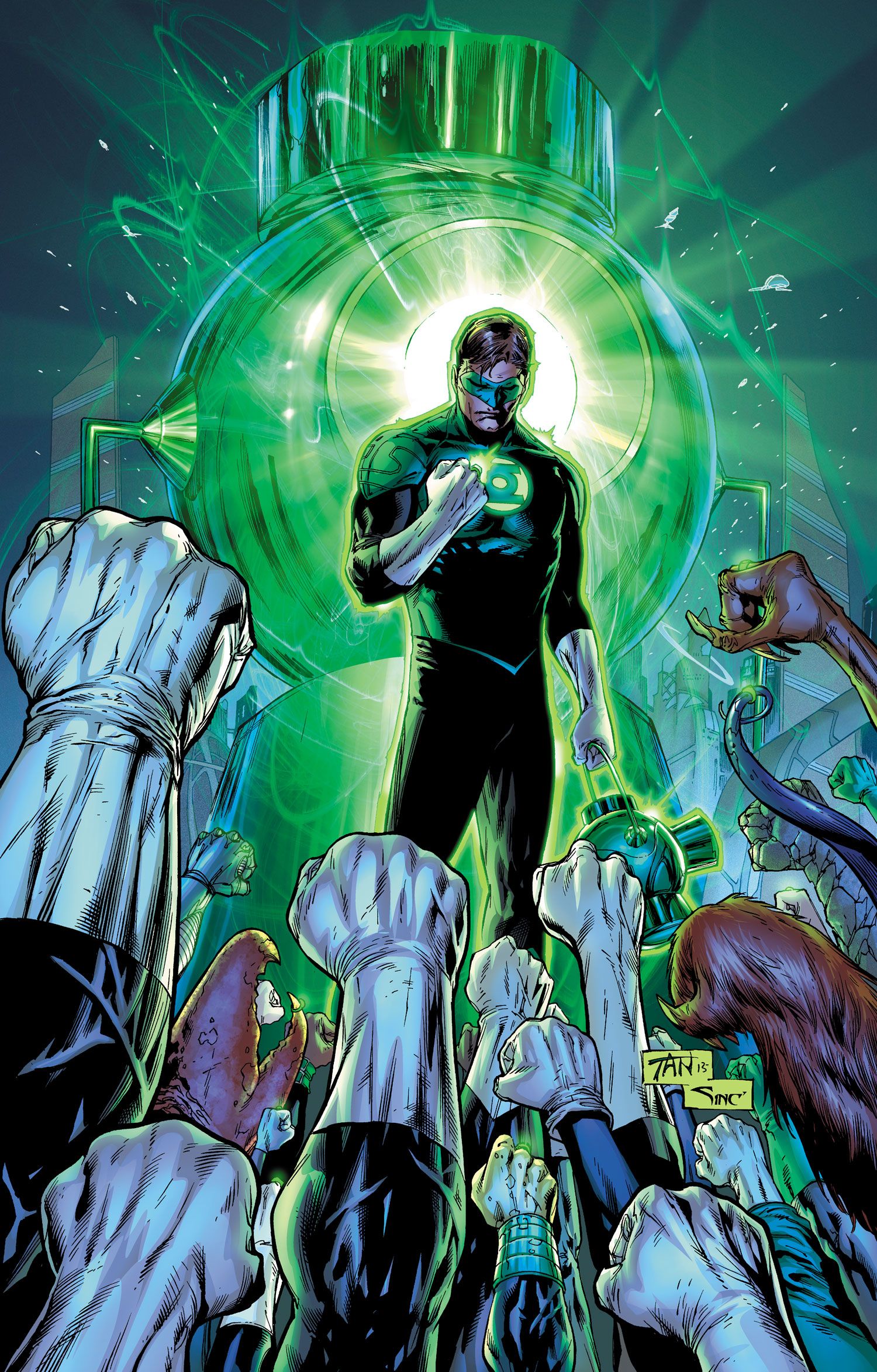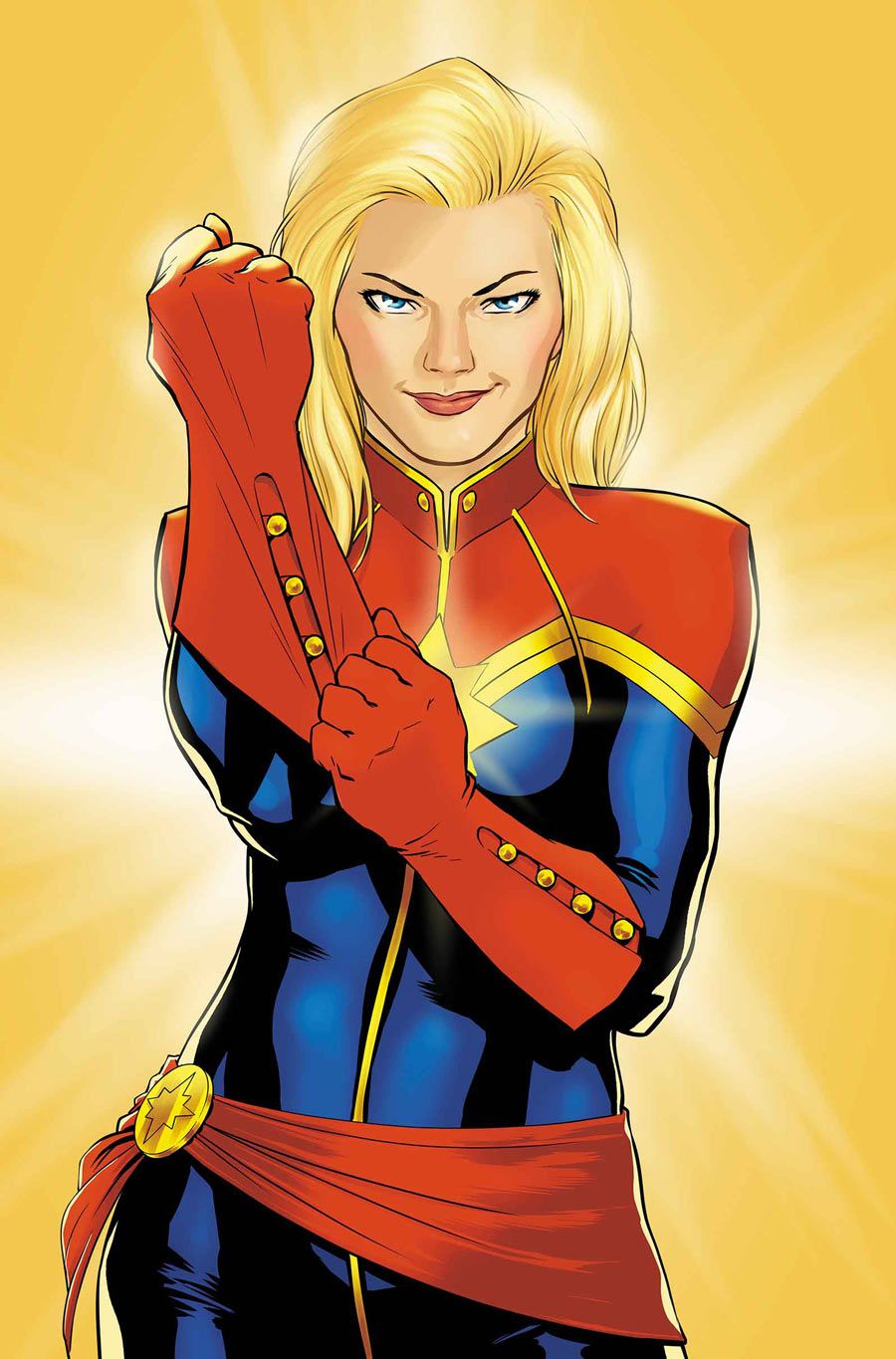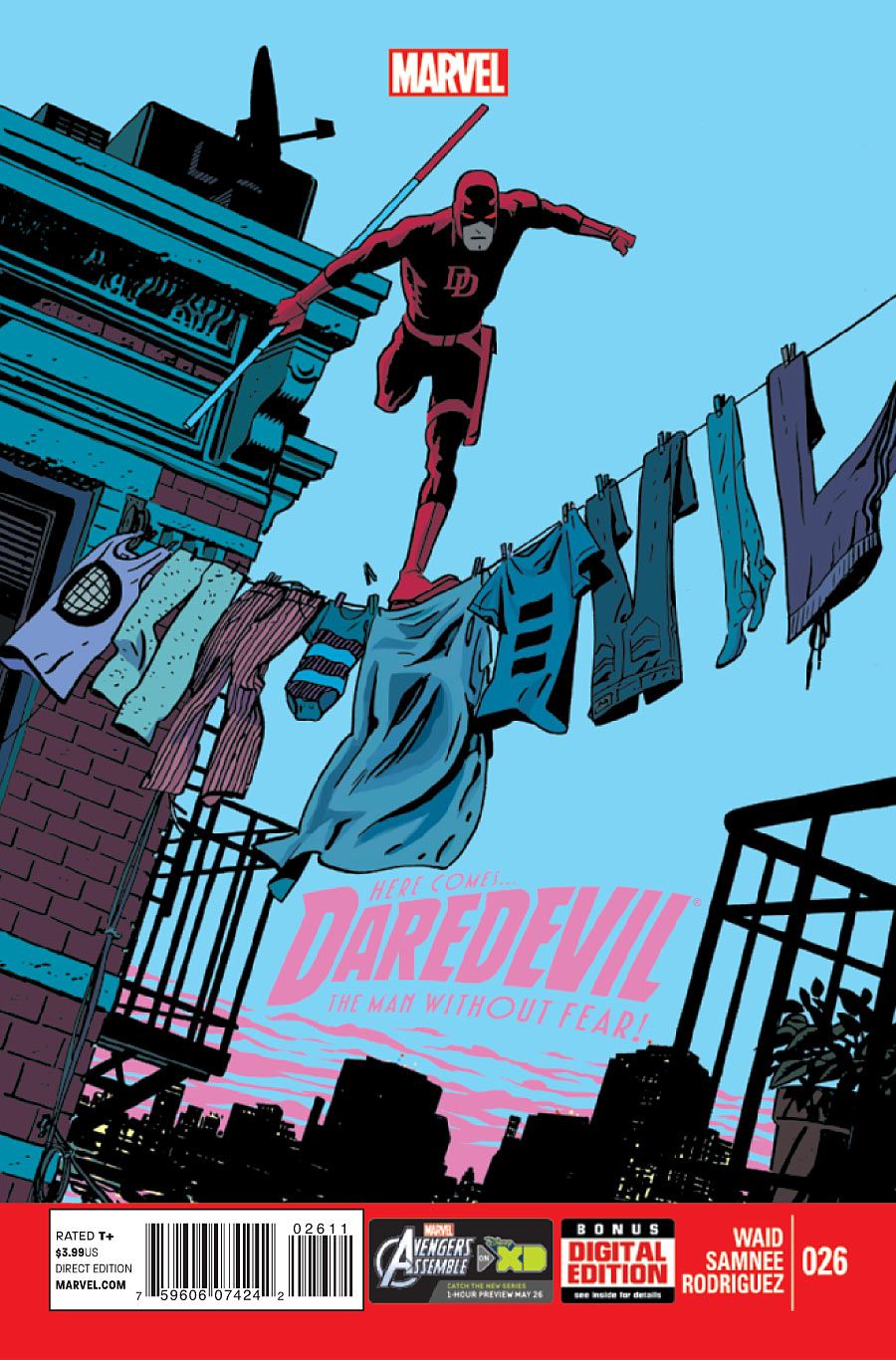As Mark Waid began an hour-long discussion called "The Long Game" at WonderCon 2014 in Anaheim on Sunday, he admitted that he and his fellow panelists -- Kelly Sue DeConnick, Francis Manapul, James Robinson, Tony Daniel and Robert Venditti -- were unsure if "The Long Game" meant writing story arcs on superhero titles or the longevity of a superhero comics writer. In the end, they decided it is really elements of both.
"Some of us have written comics in long stretches, some are fairly new at this, but it's rare you pick up an assignment where it's one or two issues and then end up on it for six years," said Waid. "But now, they usually hire you for at least a year. There's security there, but the road is wide and long." The challenge of navigating that road became to focus of the rest of the discussion.
Turning to Robinson, whose "Starman" series was one of the longer runs amongst the panelists, Waid asked him how much of a plan he had going into the title's 80+ issue run (including annuals and specials). "I was determined to beat Gaiman's 'Sandman,'" quipped the writer.
RELATED: WC14: Waid's Thrillbent Launches an App, Revives "Empire"
According to Robinson, DC's editorial hierarchy in the 1990s consisted of three controlling group editors: Denny O'Neil, Mike Carlin and Archie Goodwin. Two out of the three editors had to approve any project in order for it to move forward. "I kept saying to Archie, 'When can I have a new Starman?'" At the time, 'Starman' featured Will Payton as the lead character and was not fondly regarded by fans or the staff. Robinson remembered Carlin specifically saying "no one wants to read another 'Starman' book." Eventually, Goodwin and Carlin hammered out a deal for Robinson to write a four-issue miniseries, eventually published as issues #0-3 of the ongoing series. What changed the title's status? "At the end of the fourth issue, I had the two other Starmen [Will Payton and Mikaal Tomas] show up for a cliffhanger. Carlin saw it coming together and said, 'Let's go for it.'"
When Waid pointed out that market forces could change a plan like that, Robinson noted that his "The Shade" miniseries was originally meant to be an ongoing in the wake of the sales success of the Blackest Night "Starman" tie-in special. "Originally, [DC co-publisher] Dan DiDio asked me to make it monthly," he said. The two eventually agreed on the miniseries, but by then, the New 52 became the focus of the company's attention. "Had they made 'Shade' one of those [ongoing] books, it wouldn't have been the book it was," he explained. That editorial freedom did come at the cost of sales and marketing attention. In order to secure a collected edition, Robinson had to appeal to the fans to read "Shade" monthly.
The New 52 relaunch also had an effect on Manapul's early plans for his scripting debut on "The Flash" following Geoff Johns' departure from the title. "The editors asked if I wanted it. I thought I was just taking over the [one] issue after he left," the writer/artist recalled. "Then they were going to relaunch it. My co-writer [Brian Buccellato] and I wrote a 12-issue plan. Then what ended up happening was the New 52 and we had to throw it all out." At the time, the New 52 was such a secret that many creative teams, including Manapul and Buccellato, were still plotting books with the old continuity. When the New 52 was announced, he remembered "not a lot [of our story] could be repurposed."
Tony Daniel, also an artist taking over a title from a well-known writer, was privy to the New 52 plans and plotted his pre-reboot run on "Detective Comics" accordingly. "With the relaunch of the New 52, I did have my own plan for maybe the first 9 issues." Even with the knowledge of the company-wide reboot in mind, he also had to abandon some of his initial plans. "I thought I was going to have a really great direction, but it got screwed up. Someone else was using the Scarecrow -- even though I had already been approved to use him -- and I kept getting derailed." Ultimately, the false starts led him to leave the title.
WC14: DeConnick Spotlights "Captain Marvel," "Bitch Planet" & More
Waid pointed out that while the New 52 is an exceptional case, it can also happen at cross-town rival Marvel Comics as well, especially when line-wide events are taken into account.
Robinson noted the events have become more frequent. "During "Starman,' there was a yearly event. Now, it's every three months and you have to add [the crossover] in so it feels organic."
That tension between crossovers and the long game led Venditti to pitch a run on "Green Lantern" that saw Hal leave Earth behind. "It was a conscious decision," he said. "We can carve out a cosmic wing of the company. Hal will go back to Earth [eventually], but to get our long game going, it was all out in space." Currently, Venditti's long game is planned out through March of next year.
Venditti also found long term thinking helps on a title like Valiant's "X-O Manowar" and its stable of rotating artists. "If I didn't have that long term plan, the book wouldn't happen," he said.
DeConnick mentioned she still has some problems managing her long game in regards to the rotation of artists on and off a book. This led Robinson to ask her how she will deal with Captain Marvel appearing in both her book and Brian Michael Bendis's "Guardians of the Galaxy."
"I haven't figured it out yet," DeConnick admitted. "When [the book] was on Earth, I was working with Jonathan Hickman because she was on the 'Avengers' main title. Now, [I talk to] Bendis... and they're both so laid back!" Hickman's constant refrain was "Do what you want." Bendis also told her they can make the continuity work with her plans for the character.
"I learned that you can say no to the crossover," she said. After seeing a master planning document for an upcoming event, DeConnick asked a writing mentor what she should do. She was advised to politely decline to participate and Marvel agreed to it. "If I'd known, #16 and 17 of the last [Captain Marvel] run would've been wildly different!"
"But it's also the two for me, one for them thing," added Waid.
"I initial said no to 'Court of Owls,'" said Daniel. "Scott Snyder called me and said, 'You don't have to feel you have to say yes.'" Eventually, Daniel said he was encouraged by marketing to participate because of a potential sales loss.
DeConnick admitted she sees her shorter runs as more successful than even a six-issue story. "I haven't excelled at weaving everything together and picking it up in the next story," she said. Consequently, she has taken to examining the way Paul Levitz and Chris Claremont planted long term story seeds in their respective runs of "The Legion of Super-heroes" and "Uncanny X-Men," respectively.
Waid explained to the audience his spectrum of long term planning, which goes from Hickman to Golden and Silver Age DC writer Robert Kanigher. "Hickman has the long game down pat. When he first came into the Marvel offices, he had note books that were like the ones from 'Seven' and he'd say 'here's what we're gonna do' with that Texas drawl of his. It's phenomenal! He knew his last issue of "Fantastic Four" before he wrote his first."
WC14: Venditti, Chang and DC Comics' Green Lantern Face a Universe at War
Kanigher, on the other hand, wrote his scripts on the train into New York on a portable typewriter. According to Waid, he would start with the first panel of page two; page one typically being a splash page teasing the story. "[He would] just be thinking on the page and making it up as he goes. When his hour-and-twenty minute ride was over, he'd be done and he'd give [the script] to an artist."
"I'm so jealous, I'm shaking," quipped DeConnick.
Waid admitted he tends to fall on the Kanigher side of the spectrum when working on his cliffhangers. "I almost never have the slightest idea how it's going to turn out. At least one night a week, I am unbearable to live with [while resolving my cliffhangers]," he said. To Waid, finding a cliffhanger he has trouble resolving means it will be shocking for the reader and offers a level of spontaneity to the writing, even if it makes him hard to live with.
"I'm a pretty firm agnostic until issue five -- then I pray," joked DeConnick.
Waid added, "There are no agnostics behind the keyboard."
Manapul said he experienced the luxury or pitching two-year plans on the books he writes. He likes working that way as it makes him consider his conclusion first. "There is spontaneity in where I'm starting."
"The creator-owned stuff I've done is smaller stuff; 125 pages. I have a firm plan, but I don't adhere to it," said Venditti. "Those are the moments where the characters are doing something on their own. It keeps you writing." He also tends to keep his work-for-hire material loosely plotted.
The willingness to move away from the plan recently helped Manapul find his way back into a story. "I was just cracking my brain, staring at the computer. I just went back to 'What do I want to do?' and 'What do the characters want to do?' and it all started falling into place."
In the end, all agreed that the long game is ultimately about finding those special moments with the characters themselves.
"It's all about character," said Waid. "No one remembers plot."
Stay tuned to CBR News for more coverage of WonderCon 2014.

